What are the filters who produce them how much they cost, and what you need to know for the right choice.
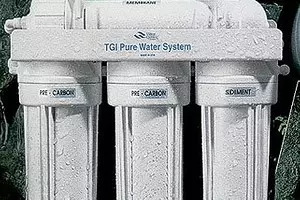
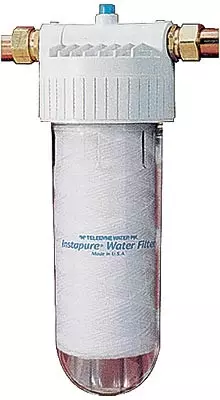
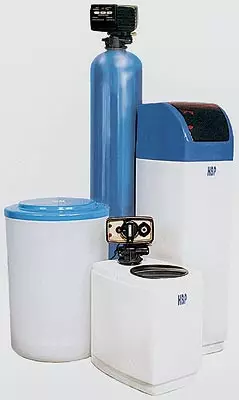
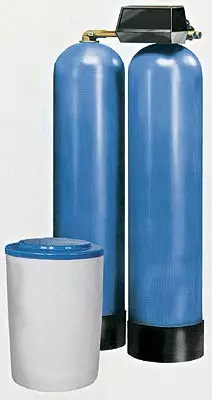
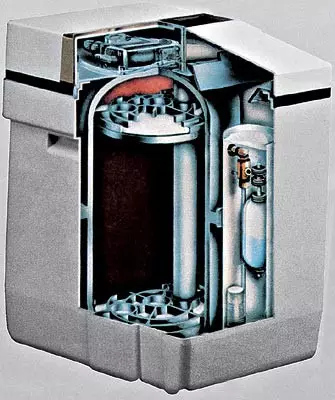
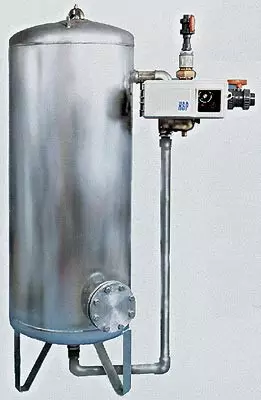
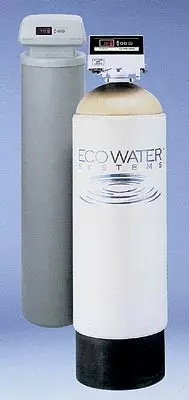
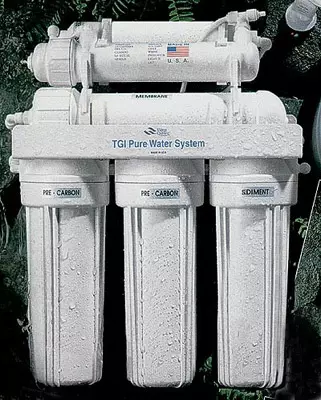
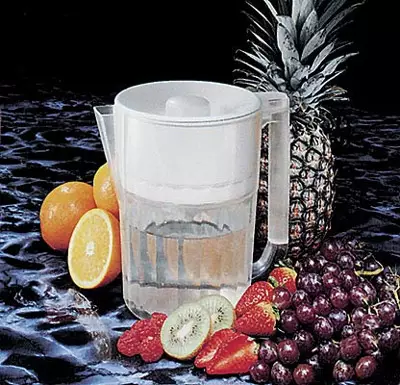
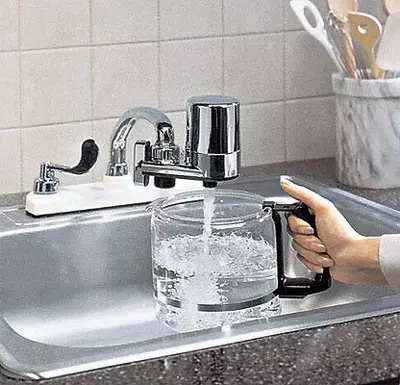
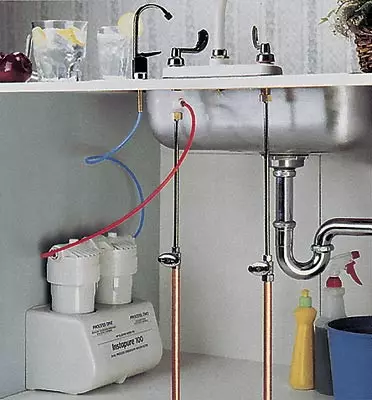
Water quality in the plumbing network of our houses leaves much better. It is only in spring and autumn, when rain or melting water carry a huge amount of harmful substances and bacteria
To protect us from their effects on the sewage treatment plants, the amount of chlorine disinfecting water sharply increases. In addition to chlorine in tap water, an insoluble precipitate is often present in the form of sand and rust, organic substances that give water an unpleasant odor. All this has quite specific reasons, one of which is the worniness of the sewage facilities and plumbing communications. These problems of drinking water quality are relevant for water pipes of small villages or cottages that do not have centralized water treatment facilities and using water from artesian wells.
The quality of drinking water is a problem that is acute not only in our country, but also around the world. The SanPiN norms adopted in the 1996th, determine the requirements for it and the maximum permissible content in the water of bacteria, gases, organic and inorganic substances. Ombars of substances to be controlled, inclusive about 2000 parameters, and compulsory control are subject to more than 200. A complete analysis of the quality of drinking water can be done in Laboratories SES or special accredited laboratories, but it will cost it quite expensive.
The most radical method of water purification is its distillation, when all impurities, bacteria, gases and dissolved salts are removed as a result of distillation. But it is necessary to take into account that such water is unsuitable for constant use as drinking. If you deprive a person in the body of salts, a very fast impaired salt balance will occur, which can lead to severe health consequences. But the task of improving the quality of drinking water can be solved if you correctly use water to clean, namely a variety of filters. Now there are more than 30 manufacturers of water treatment equipment on the Russian market. Among them, more than half of the company - American, there are English, French, Swiss, South Korean and, which is very pleased, 4rossky.
Some drinking water requirements according to Sanpin 2.1.4.559-96
| Indicators | Units of measure. | PDK standards |
|---|---|---|
| Chlorine (residual free) | mg / L. | 0.3-0.5 |
| Chlorine (residual bound) | mg / L. | 0.8-1,2 |
| Chloroform (during water chlorination) | mg / L. | 0,2 |
| Ozone residual | mg / L. | 0,3. |
| Hydrogen indicator | Units. pH | 6-9 |
| Common Mineralization (Dry Residue) | mg / L. | 1000. |
| Stiffness common | mmol / L. | 7. |
| Petroleum products, total | mg / L. | 0.1. |
| Pav, anionactive | mg / L. | 0.5 |
| Aluminum (Al3 +) | mg / L. | 0.5 |
| Barium (Ba2 +) | mg / L. | 0.1. |
| Iron (Fe, Total) | mg / L. | 0,3. |
| Cadmium (CD, Total) | mg / L. | 0.001. |
| Manganese (MN, Total) | mg / L. | 0.1. |
| Arsenic (AS, Total) | mg / L. | 0.05 |
| Nitrates (NO3-) | mg / L. | 45. |
| Mercury (HG, total) | mg / L. | 0.0005 |
| Lead (PB, Total) | mg / L. | 0.03. |
| Selenium (SE, total) | mg / L. | 0,01 |
| Sulfates (SO42-) | mg / L. | 500. |
| Fluorides (F-) | mg / L. | 1.5 (1.2) |
| Chlorides (CL-) | mg / L. | 350. |
| Cyanides (CN-) | mg / L. | 0.035 |
| Zinc (Zn2 +) | mg / L. | five |
| Lindane (Pesticide) | mg / L. | 0.002. |
| DDT. | mg / L. | 0.002. |
What you need to know to choose the right filter
First of all, it is necessary to decide with what kinds of water pollution you will fight. Most of them are easily determined visually and do not require special chemical knowledge.The first and most common type of pollution in water insoluble mechanical particles, sand, sludge, rust and other suspensions. To get rid of them, sediment filters use. Sometimes there are significant amounts of dissolved iron in water. In this case, initially transparent water when defending or when heated becomes a drone, has a characteristic taste and forms rusty stains on the dishes and plumbing. To solve this problem, remarking filters are commonly used.
Extremely widespread disadvantage of water rigidity due to the high concentration of calcium and magnesium salts dissolved in it. They are the reason for all the famous scale. To get rid of this use stiffener corrector filters. In the early time, portable meters of total water rigidity appeared on sale, they are quite accurate and at the same time not too expensive.
The acid-alkaline indicator (pH) of the water to the eye and the taste will not define, only commercially available portable pH meters will help.
The unsatisfactory organoleptic indicators of water-unpleasant smell, the taste and color are usually associated with the presence of organic substances, residual chlorine or hydrogen sulfide. This problem is solved with the help of coal filters.
The most intimate purification are water pollution with salts of heavy metals. The presence of these substances without laboratory research will not determine. There are no special devices for their removal, but water softening filters are quite well coped with this.
And in conclusion, bacteriological pollution. Snai struggle with ultraviolet sterilizers or ozonation. Information about the peculiarities of water in your region can be obtained by contacting the local SES. In principle, the water purification system can be completed from individual blocks, and you can immediately purchase a system of integrated water purification.
Sand separately, water separately
(sediment filters)
For cleaning from mechanical impurities to the main pipe at the entrance of water in an apartment or the house is set by sedimentary, or as they are sometimes called, "sedimentation", filters. They can be divided into two large groups according to the material from which the filter element is made.
More simple and cheap sedimentary cartridge type filters. They allow cleaning water from a particle size of several microns. The most common filters with pores 20-50 μm (0.02-0.05mm), which have a limited dirtiness and require quite frequent washing, although automatic filter cleaning is provided in a number of models.
Lack of devices of this type - the inability to accurately determine the degree of production of the filter element. New models with unbreakable transparent enclosures allow only approximately controlling pollution and determine the need to replace the cartridge. The service life of the cartridge depends substantially both from pollution and the amount of water passed through it and is from two months to six months. It is also necessary to take into account that only filters calculated on the temperature above 40c are necessary for hot water pipes. Now in stores you can find cartridges made of polypropylene cord, wound on a polypropylene core, from pleated polyester, melaninacelulosic, mesh stainless steel (resize of up to 50mkm) and a number of others. In addition to the material, the filter cartridges differ in length and diameter. There are three main size in length: 5 (127mm), 10 (254mm) and 20 inches (508mm).
Choosing a sedimentary filter or a cartridge to it, it is necessary to remember that increasing the degree of water purification, namely the decrease in the size of the filtered particles, is directly related to a decrease in the pore size, through which the water must pass, and the longer the pores, the greater the pressure filter resistance and the more A significant filter will weaken the water pressure at the outlet. The price of cartridge sediment filters ranges from 30 to100dollars for devices with manual washing or a removable cartridge and 200-500 dollars for filters with semi-automatic and automatic washing. The cost of the replaceable filter cartridge varies in the range of from 5 to50dollar, depending on its complexity.
The second group of sediment filters is a flow-type system. The main elements of the filtering medium (aluminosilicates or special ceramics) and automatic control unit. The filter properties of the medium are periodically restored due to the washing, produced in automatic mode, while accumulated in the deposit filter are discharged into drainage. The advantage of such systems is high performance and durability (shortcut). However, they are quite cumbersome and the road. The optimal option can be the installation of a shared filter to the house (cottage) or an entrance.
Devices for adjusting water hardness
The next step of improving water quality is its softening. High rigidity is not so strongly affected by the taste of drinking water, but very adversely affects the performance of modern household appliances, hot water and heating systems. It is the deposition of scale on the inner walls of heat exchangers and in pipes, leading to overheating of systems, 90% is the cause of the failure of boilers. Skip, relatively harmless on the walls of the kettle, can cause premature failure of plumbing, dishwashers and washing machines.Economically acquitted and effective way to combat the high rigidity of water - the use of softener filters based on ion exchange resins. The essence of the process is to replace calcium and magnesium ions, the salts of which make water tougher, on ions whose salts do not form solid deposits. This process has long been well known and is widely used in the chemical industry. Modern ion exchange resins are distinguished by high reliability and durability and work in high performance systems. Some of them are able to remove from water not only solid stiffness, but also soluble salts of iron, inorganic leads of lead, barium, other heavy metals and even radioactive radium 226/228. The service life of such resins reaches 6-8 years and depends only on the quality of the source water.
Most of the filters for the regulation of water rigidity are sufficiently large (about 1.5 m and a diameter of 200-300 mm height) and are designed primarily for use in the cottage. The cost of such an installation is 500-600 dollars. But if this problem is very acute, you can find enough compact devices on sale (approximately 0.50.30.7 (0.2) m) for installation in the apartment.
Recently, filters for water softening with polyphosphate began to appear. They are small in size and not very expensive (approximately 35dolls), and 1,5 kilogram packaging of granulated polyphosphate will cost approximately 15dolls.
It is worth saying about magnetic filters of reducing the hardness of water, which is recommended to be installed in apartments for washing or dishwashers, water heaters. They are compact and sufficiently inexpensive - 70-80 dollars. The incidence of the example can be given a magnetic neutralizer of calcium deposits, it has a capacity of up to 0.72m3 / hour at the maximum water temperature to 95C and the pressure of up to 136at.
Some sediment filters mounted on plumbing communications
| Filter / cartridge | Maximum pressure, atm | Cleaning degree, microns | Cartridge service life | Ability to control and washing |
|---|---|---|---|---|
| MA1610 / RB25 | twenty | 25. | 115000l / 6 months (*) | Replaceable cartridge |
| Amets / RB25 | 13.8. | 25. | 110000L / 6 months (*) | Replaceable cartridge |
| Amets / R30 (50) | 30 (50) | 110000L / 6 months (*) | Replaceable cartridge | |
| Amets / PP30 | thirty | 110000L / 6 months (*) | Replaceable cartridge | |
| Amets / CW-F | five | 110000L / 6 months (*) | Replaceable cartridge | |
| Dulcofilt2000. | sixteen | 95. | - | Self-cleaning, manual drain |
| InstaPure IF-20A | - | five | 115000l / 6 months (*) | Replaceable cartridge |
| ALHPA-VOGT AV-10 | sixteen | 80. | - | Replaceable cartridge |
| AV-RS. | sixteen | 90-120 | - | Auto industry |
| Min Filter Mall | sixteen | 60. | - | |
| AV-HW-16 | sixteen | fifty | - | Replaceable cartridge |
| AV-Alfi. | sixteen | 90-120 | - | Replaceable cartridge |
| RBM metal. housing | sixteen | 80-100 | - | Manual flushing |
| Plastic housing | eight | 20-25 | - | Replaceable cartridge |
| Nettuno. | sixteen | 300. | - | Manual flushing |
| E.P.L. FC 100 (CF1) | eight | five | - | Replaceable cartridge |
| FC 150 (CF1) | eight | five | - | Replaceable cartridge |
| Permo Avtomat | sixteen | 90-110 | - | |
| Semiautomat | sixteen | 90-110 | - | |
| Manual flushing | sixteen | 90-110 | - | |
| Braukmann F74c. | sixteen | twenty | - | Auto industry |
| Braukmann F76S / AA | sixteen | 105. | - | Auto industry |
| (Plast. Case) / AB | sixteen | twenty | - | |
| (Plast. Case) / AC | sixteen | fifty | - | |
| (Bronze (up to 70C) / AAM | 25. | 105. | - | |
| (Bronze (up to 70C) / AFM | 25. | fifty | - |
(*) - Data on tap water.
Defeling filters
The presence of iron in water makes it unsuitable for both drinking and for use in domestic purposes. This is most acute residents of rural areas, owners of country houses, vacationers in sanatoriums and tour bazes. It is the groundwater used in such residential complexes that contain significant amounts of dissolved iron salts. The easiest and most common purification method is to transform them as a result of redox reactions to insoluble oxide (rust). For this purpose, various oxidizers are used, such as ozone, sodium hypochlorite or potassium permanganate (manganese). The resulting rust can be easily filtered. Such wilderness filters are capable of, in addition, remove from water and manganese compounds, and some and hydrogen sulfide.These filters are quite bulky and therefore makes sense to install them on the cottage or on a group of structures. Most of the filters of this type have automatic regeneration carried out by a timer signal or water meter. Operation of filters for removing dissolved iron requires a certain pre-purification of water. There should be no hydrogen sulfide and petroleum products, as well as an insoluble sediment. Such a device will be operational only in a complex with a filter from activated carbon and sediment. Usually these installations are either sold complete with prefilters or already have such protective functions in their design. Here it is impossible not to mention the domestic installations of the UVG series, the principle of operation of which is based on aeration, followed by filtration on combined filters.
The cost of such installations for the removal of dissolved iron as domestic and imported production ranges from420 to 3500Dollar.
Activated Coal Filters
To improve the organoleptic water indicators, filters from activated carbon (one of the oldest and most common) are successfully used successfully. Due to its high adsorption capacity, activated carbon efficiently absorbs dissolved gases and organic compounds. But the accumulated organic care is difficult to excrete from coal, so to avoid possible salvo emission of pollution into purified water, activated carbon filters require periodic replacement. To increase the operation of the filters, activated carbon obtained from the coconut shell is now used, the adsorption capacity of which is higher than that of the coal obtained, for example, from birch wood. In order to avoid bacteriological ingroup of such filters, coals with special bacteriostatic additives are used, the simplest of which is colloidal silver.
Drinking water doctor devices
A variety of devices for additional cleaning of drinking water can be divided into three groups.The first is the jug filters, where water is seeping through a replaceable cartridge to the lower vessel.
Second-flow devices installed directly to the mixer.
It is special systems that are connected to the cold water pipe are installed next to the sink, and more often under the sink, and have a separate crane.
Among the filters-jugs are the most common filters type "Barrier", Brita, Kenwood, and a number of others. They are distinguished from each other appearance, composition and cleansing ability (capacity) of the filter cassette. So the Waterfresh filter element is designed to filter only 3.78 liters of water for 1 day. The filter element of the "barrier" is designed to purify 500 liters of water for about 2-3 months. They are available in three modifications: for places where there is a possibility of bacterial contamination ("barrier3"), this element consists of activated carbon with colloidal silver on it; For the city ("Barrier4"), in this case silver is not applied; and an element with fluorinating effect ("barrier5").
The filter element of the Brita water purifier, in addition to activated carbon with silver ion deposited, contains and ion exchange resins that collect heavy metal ions. The capacitance of such an element is enough about 100 liters of water.
The flow filter is usually a sedimentary filter and an element from activated carbon. Their container is small, the cartridge is designed to supply a family with drinking water for several months, after which it needs to be replaced. Ktakim filters include the Russian "Spring", "Geyser", "Bogatyr" and import instapure models F-2CE (3CE, 6E), Rowenta Aquatop2000 and a number of others. According to external parameters, import filters are superior to domestic, but do not forget that they are designed for water quite good quality. AV plumbing highways, such as country sites, it is better to use domestic filters. They are reliable enough, and most importantly, much cheaper imported.
More complex devices of deep purity drinking water contain a sequence of two and more filtering elements. They are installed next to the sink or under the sink. The simplest of them differ from the mixer mounted by the fact that they have a separate water supply and faucet. In addition, the capacity of the filter elements of this group of filters is significantly more, they are usually designed for cleaning several thousand liters of water for about six months. Their value fluctuates from 170 to 270dolls. The same group should be attributed to more complex treatment plants, which, in addition to sedimentary and coal filters, includes filters from ion exchange resins, which detain heavy metal ions.
The second type of electrochemical devices. They work using the processes of electrochemical oxidation and recovery, due to which toxic substances contained in water are neutralized. These devices require power from the mains, but the power consumed is small. They have a large resource of work, however require regular (approximately 1 times in 2 months) flushing. Such devices (for example, the "Emerald" series) well purify water from metal cations and organic, somewhat worse removed anions (acid residues).
The third group includes the most complex devices based on the principle of reverse osmosis (clean water vehicles through the membrane). Such an installation usually consists of a pre-sediment filter with a pore size of about 20 μm, a pre-filter from activated carbon and a thin-film composite membrane that ensures a very high degree of water purification. At this stage, approximately 90-95% of all impurities are removed, and another element with activated carbon is installed for finishing cleaning to remove the remaining organic substances, unpleasant odor and taste.
Morely complex installations The number of filtering nodes reaches 6, in addition, they are supplied with a special pump to maintain water pressure. Ultraviolet (UV) lamps are used for microbiological water purification. Typically, such installations have a container for collecting purified water. The cost of such devices is 340-800 dollars.
Comprehensive Drinking Water Supplement Devices
| Device | Filtering elements | ||
|---|---|---|---|
| Number of cleaning steps | Fundamentals. Principle of Cleaning | Disinfection: degree / way | |
| Emerald-M. | one | Electrochemical | 100%/- |
| Rosa-1 | 2. | Filter-sorbial | - / Silver salts |
| Aqua, Solo. | one | Filter-sorbial | - |
| Duet | 2. | Filter-sorbial | - |
| Crystal-10. | 3. | Nanofiltration | 100%/- |
| Leader-m2. | Filter-sorbial | - | |
| InstaPure IF-10F | 2. | Filter-sorbial | - |
| Equinox-10. | four | Filter-sorbial | The principle is not explained |
| -10u. | four | Filter-sorbial | The principle is not explained |
| DS 2. | 3. | Filter-sorbial | - / Silver salts |
| DS 3. | four | Filter-sorbial | - / Silver salts |
| WaterLab. | 3. | Reverse osmosis | - / UV lamp |
| Ecolite. | 3. | Reverse osmosis | - |
| Nimbus-3. | four | Reverse osmosis | - |
| Nimbus CS-2 | four | Reverse osmosis | - / UV lamp |
| Neptune | four | Reverse osmosis | - |
